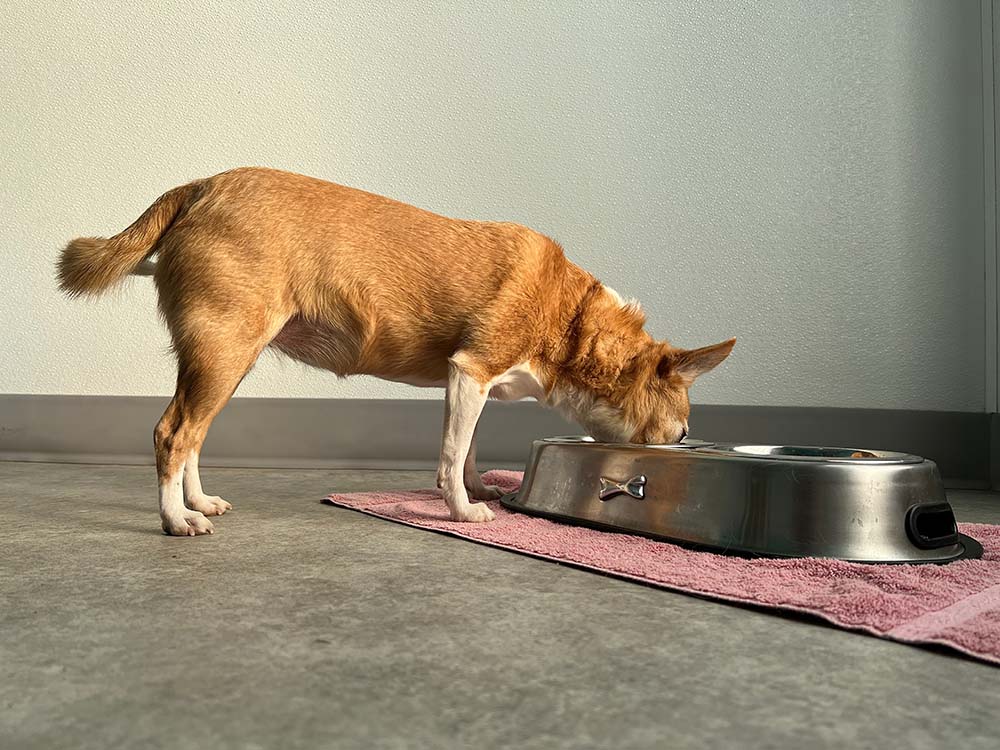Advertising Tactics In Commercial Pet Foods
Pet food marketers know how pet owners think. They know you want your dogs to eat a diet as healthy as your own. So they provide you with reassurance when you buy your dog’s food. The marketers want you to think: “I’d eat that!” The term in the industry is called humanization.
The pet food industry constantly tries to humanize pet food by adding exotic fruits, vegetables, and even superfoods to the ingredient panel. It makes sense for manufacturers to splash pictures of real, whole, fresh foods all over the packages. If it’s splattered all over the package, then surely there must be tons of it in the food, right?
Many pet owners have learned to read pet food labels the hard way. They know to avoid by-products, corn, BHA and BHTs … And today’s pet owners are savvy. They know that dogs with serious issues need special ingredients. For example, a dog with bladder issues could benefit from food with cranberries.
And that’s where marketing, not medicine takes over. Shopping for dog food by choosing the bag with the largest s of cranberry might seem like you’re on the right track. But you know not to be so trusting. So you flip the bag over and check out the ingredient list. And there you see … cranberries. Perfect!
As most pet owners soon learn, an ingredient panel lists ingredients by order of weight, largest first. Seeing cranberries on this list, along with the giant photo on the front of the bag, should confirm that this will help a dog with an ailing bladder.
So here’s the second part of Label Reading 101.
A manufacturer’s pet food recipe is a trade secret. But there are ingredients that can act as markers of quantity. There is one ingredient in particular that can shed some light on the smoke and mirrors of marketers.
And that’s salt.
The Association of American Feed Control Officials (AAFCO) recommends that dry dog food contain at least 0.3% sodium. That’s for both maintenance and to support normal growth and development. These are minimum recommended levels.
Why Is Salt Controversial?
Salt (sodium chloride) is used in many perishable foods, including commercial kibble (source), as a natural preservative that prevents the proliferation of microbes (mold and bacteria). It does this by “sucking” the moisture from it, leaving it too dry to allow microbial growth.
For the same reason that salt preserves food, this mineral, when used in large doses, is dangerous to dogs and can lead to salt toxicity or hypernatremia, and hypertension (source, source, source). Too much salt for dogs can cause them to become very thirsty and urinate more frequently, which could lead to dehydration (source).
When large doses of sodium chloride have been ingested by the dog to the point of toxicity, your pet may also experience vomiting, diarrhea, muscle tremors, depression, elevated temperature, seizures, and even death.
However, most animals can tolerate a higher concentration of salt as long as they have a continuous supply of freshwater to flush it from their system.
So, How Much Salt Can Dogs Have?
We know, we didn’t exactly answer this question above. Here’s the skinny. As long as you are feeding your pet nutritious dog food that is produced by a reputable brand, they should not need any additional salt in their diets. What is provided to them through their wet or dry food is adequate to keep them healthy.
One thing to note, however, is that you want to take into account other things your pet may eat like their treats. Treats can be higher in salt and other ingredients that are not healthy like sugars. What’s more, canned or wet food is higher in salt than dry. Too much sodium can be just as harmful, if not more, to your pet than too little…

Why Salt is Bad for Your Dog
Did you know that salty snacks are one of the more common human foods people give to their dogs? Chips, pretzels, and other delicious items seem to be easy to hand over to our fur babies. Have you ever stopped to think whether salt is good for them, though? When we think of salt, it’s usually with guilty pleasure as our minds go right to hot and tasty French fries.
Even if you don’t have a mild fry addiction, you probably know that too much salt is not good for you. So, what about our canine friends? Is it good for them? Bad for them? Does it affect them as it does us? The short answer is yes, salt is safe for your dog to eat. As a matter of fact, they need salt in their diets to survive.